Programming and Data Wrangling with VBA and Excel
- 3 Days Course
- Language: English
Introduction:
Objectives:
In this course, you will develop and deploy VBA modules to solve business problems. You will:
Identify general components of VBA and their appropriate use in solving business solutions.
Record VBA macros to automate repetitive tasks.
Use reference tools built into Excel to get help on VBA programming language and objects used in the Excel VBA environment.
Write VBA code to create a custom worksheet function.
Eliminate, avoid, or handle errors in VBA code, and optimize its performance.
Control how and when macros run.
Develop UserForm objects to create custom dialog boxes and windows.
Use VBA to read and write data from local files and cloud services.
Use VBA to clean and transform data.
Run programs and commands outside of Excel and share VBA projects with other users
Course Outline:
1 – Using VBA to Solve Business Problems
- Topic A: Use Macros to Automate Tasks in Excel
- Topic B: Identify Components of Macro-Enabled Workbooks
- Topic C: Configure the Excel VBA Environment
2 – Automating Repetitive Tasks
- Topic A: Use the Macro Recorder to Create a VBA Macro
- Topic B: Record a Macro with Relative Addressing
- Topic C: Delete Macros and Modules
- Topic D: Identify Strategies for Using the Macro Recorder
3 – Getting Help on VBA
- Topic A: Use VBA Help
- Topic B: Use the Object Browser to Discover Objects You Can Use in VBA
- Topic C: Use the Immediate Window to Explore Object Properties and Methods
4 – Creating Custom Worksheet Functions
- Topic A: Create a Custom Function
- Topic B: Make Decisions in Code
- Topic C: Work with Variables
- Topic D: Perform Repetitive Tasks
5 – Improving Your VBA Code
- Topic A: Debug VBA Errors
- Topic B: Deal with Errors
- Topic C: Improve Macro Performance
6 – Controlling How and When Macros Run
- Topic A: Prompt the User for Information
- Topic B: Configure Macros to Run Automatically
7 – Developing Custom Forms
- Topic A: Display a Custom Dialog Box
- Topic B: Program Form Events
8 – Using VBA to Work with Files
- Topic A: Use VBA to Get File and Directory Structure
- Topic B: Use VBA to Read Text Files
- Topic C: Use VBA to Write Text Files
9 – Using VBA to Clean and Transform Data
- Topic A: Automate Power Query
- Topic B: Transform Data Using VBA and Workbook Functions
- Topic C: Use Regular Expressions
- Topic D: Manage Errors in Data
10 – Extending the Programming Environment Beyond the Workbook
- Topic A: Run Other Programs and Commands
- Topic B: Share Your VBA Projects
Enroll in this course
$885.00

 Abee, Alcomdale, Alpen, Athabasca, Atmore, Beamer, Bon Accord, Bondiss, Boyle, Busby, Calahoo, Calling Lake, Carbondale, Cardiff, Chisolm, Clyde, Colinton, Coronado, County of Athabasca, County of Thorhild, Dapp, Duagh, Egremont, Ellscott, Fawcett, Flatbush, Gibbons, Grassland, Halasa, Hondo, Island Lake, Island Lake South, Jarvie, Kerensky, Lamoureux, Lancaster Park, Larkspur, Legal, Sturgeon County, Westlock County, Meanook, Mearns, Mewatha Beach, Morinville, Namao, Nesto, Newbrook, Opal, Perryvale, Pibroch, Pickardville, Pine Sands, Radway, Red Water, Riviere Qui Barre, Rochester, Smith, South Baptiste, Sunset Beach, Tawatinaw, Thorhild, Villeneuve, Vimy, Westlock, Whispering Hills, White Gull
Abee, Alcomdale, Alpen, Athabasca, Atmore, Beamer, Bon Accord, Bondiss, Boyle, Busby, Calahoo, Calling Lake, Carbondale, Cardiff, Chisolm, Clyde, Colinton, Coronado, County of Athabasca, County of Thorhild, Dapp, Duagh, Egremont, Ellscott, Fawcett, Flatbush, Gibbons, Grassland, Halasa, Hondo, Island Lake, Island Lake South, Jarvie, Kerensky, Lamoureux, Lancaster Park, Larkspur, Legal, Sturgeon County, Westlock County, Meanook, Mearns, Mewatha Beach, Morinville, Namao, Nesto, Newbrook, Opal, Perryvale, Pibroch, Pickardville, Pine Sands, Radway, Red Water, Riviere Qui Barre, Rochester, Smith, South Baptiste, Sunset Beach, Tawatinaw, Thorhild, Villeneuve, Vimy, Westlock, Whispering Hills, White Gull
